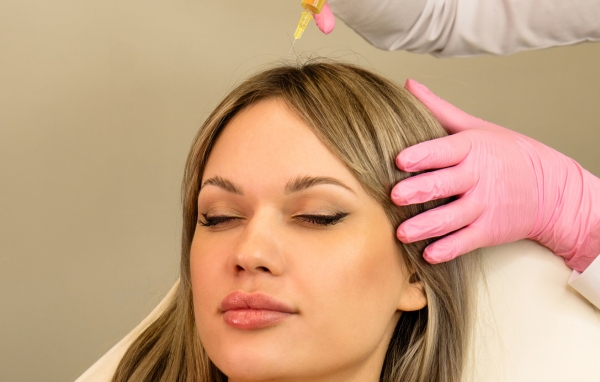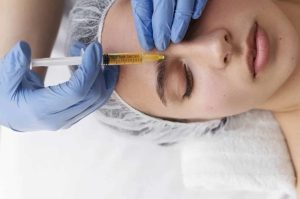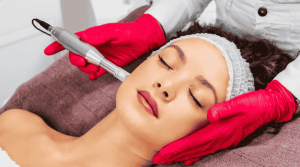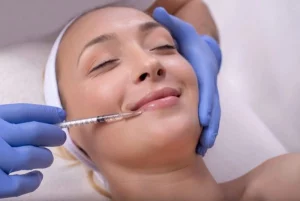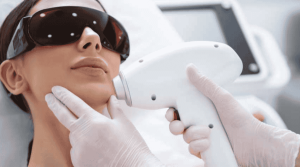Hair loss is a common concern that affects millions of people worldwide, leading to a surge in interest in innovative treatments like Platelet-Rich Plasma therapy. PRP hair treatment has gained significant popularity in recent years due to its effectiveness in stimulating hair growth and treating various forms of hair loss, including male pattern baldness and female hair loss.
As we move into 2024, understanding the PRP hair treatment cost and related trends is essential for those considering this procedure. For those in Toronto seeking expert guidance, Beauty Aesthetics offers personalized PRP hair treatments that align with the latest advancements in the field. In this blog post, we’ll explore the cost dynamics, the science behind Platelet-Rich Plasma therapy, and what to expect from this treatment in 2024.
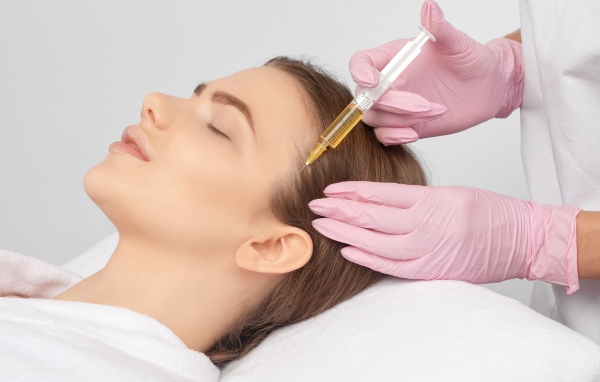
Understanding PRP Hair Treatment
PRP hair treatment involves extracting a small amount of the patient’s own blood, processing it to concentrate the platelets, and injecting this platelet-rich plasma into the scalp. The idea is that the growth factors in PRP can help stimulate hair follicles and promote natural hair growth by enhancing blood flow to the hair follicles and increasing hair density.
This procedure has become a popular alternative to more invasive methods like hair transplant surgery. PRP therapy is seen as a minimally invasive treatment with minimal downtime and discomfort, making it an attractive option for many individuals experiencing thinning hair or hair loss.
How Platelet-Rich Plasma (PRP) Therapy Works on Hair Follicles
The human body contains platelets that are crucial for wound healing and tissue repair. When concentrated into a plasma solution, these platelets play a vital role in rejuvenating hair follicles. PRP therapy uses these platelets to create a healing environment in the scalp, which can stimulate hair follicles and encourage healthier hair growth.
The process of PRP for hair involves spinning the patient’s blood in a centrifuge to separate the red and white cells from the plasma, creating a rich plasma that is then injected into the scalp. This treatment has shown promising results in various studies, particularly for those suffering from male pattern hair loss and female pattern hair loss.
Cost of Platelet-Rich Plasma Hair Treatment in 2024
One of the most important factors for anyone considering PRP hair treatment is the cost. The cost of PRP hair treatment can vary significantly based on several factors, including the location, the clinic’s reputation, the number of sessions required, and the extent of hair loss. On average, the cost for a single PRP session can range from $500 to $2,000, depending on these variables.
In 2024, the trend is likely to see a stabilization in prices as more clinics offer this treatment and competition increases. Additionally, advancements in technology and technique may also impact the overall cost, potentially making PRP hair treatment more accessible to a broader audience.
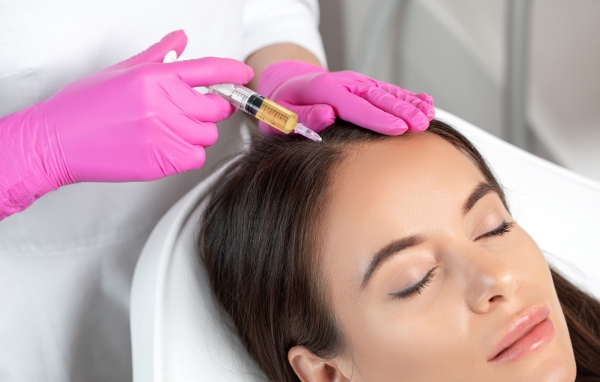
Factors Influencing the Cost of Platelet-Rich Plasma Hair Treatment
Several factors influence the overall cost of PRP hair restoration treatments:
Number of Sessions
Most patients require multiple sessions to achieve optimal results. Typically, a treatment plan may include three to six sessions spaced about four to six weeks apart. The cumulative cost can therefore add up significantly.
Geographic Location
The cost of PRP hair treatment can vary greatly depending on where you live. In larger metropolitan areas or cities with a higher cost of living, you can expect to pay more for the treatment.
Clinic Reputation
Clinics with a strong reputation, experienced professionals, and state-of-the-art equipment may charge more for their services. However, paying a premium often ensures better results and a higher standard of care.
Extent of Hair Loss
The severity of hair loss and the size of the area being treated will also affect the cost. Treating more extensive areas of hair loss requires more PRP and possibly more injections, increasing the overall cost.
The Role of Platelet-Rich Plasma in Hair Restoration in 2024
As of 2024, PRP hair treatment continues to be a sought-after option for those looking to regrow hair or enhance existing hair density. With its ability to stimulate hair growth and promote natural hair growth, PRP is increasingly viewed as a viable alternative or complement to traditional hair transplant surgery.
The effectiveness of PRP treatments lies in their ability to stimulate hair follicles, which can lead to increased hair growth and thicker hair over time. Unlike more invasive procedures, PRP offers a minimally invasive solution with fewer risks and a quicker recovery time.
Are Platelet-Rich Plasma Injections Suitable for All Types of Hair Loss?
One of the most common questions patients have is whether PRP injections are suitable for all types of hair loss. The answer depends largely on the underlying cause and severity of the hair loss.
PRP therapy is most effective for treating androgenetic alopecia, which is the most common form of hair loss in both men and women. This type of hair loss, also known as male pattern baldness or female pattern hair loss, occurs when hair follicles shrink over time, leading to thinning hair and eventual baldness. PRP treatments can help to stimulate hair follicles and promote hair growth, particularly in the early stages of hair thinning.
However, PRP injections may be less effective for other types of hair loss. For example, individuals with severe scarring alopecia, where the hair follicles are destroyed and replaced by scar tissue, may not respond as well to PRP therapy. In these cases, the follicles are too damaged to benefit from the growth factors provided by PRP.
It’s also worth noting that PRP for hair may not be as effective for those with hair loss due to medical conditions like thyroid disease or nutritional deficiencies. In such cases, addressing the underlying health issue is critical for hair restoration.
At Beauty Aesthetics in Toronto, a thorough consultation is conducted to determine whether PRP hair treatment is the right solution for each individual. This personalized approach ensures that patients receive the most effective treatment for their specific type of hair loss.
PRP Hair Treatment vs. Hair Transplant Surgery
When comparing PRP hair treatment with hair transplanty, several key differences emerge. Hair transplant is a more invasive procedure that involves moving hair follicles from one part of the scalp to another.
The surgery can be costly, with prices ranging from $4,000 to $15,000, and it typically requires a longer recovery period.
On the other hand, PRP therapy is less invasive and can be performed in an outpatient setting with little to no downtime. While PRP treatments may require ongoing maintenance sessions to sustain results, they do not involve the surgical risks associated with hair transplantation.
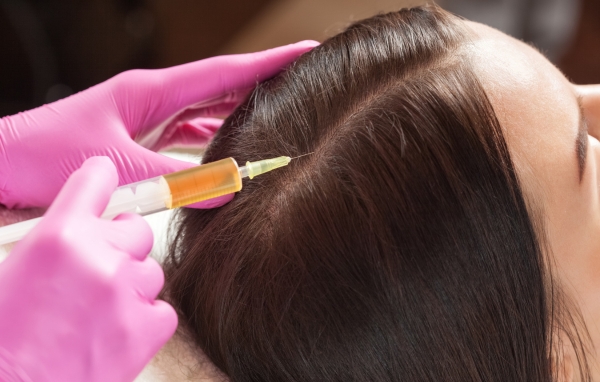
Who Can Benefit from PRP Hair Treatment?
PRP hair treatment is suitable for a wide range of individuals experiencing hair loss. It is particularly effective for those in the early stages of hair thinning or male pattern baldness. Women experiencing female pattern hair loss can also benefit from PRP treatments.
However, it’s important to note that PRP hair treatment may not be as effective for individuals with severe or advanced hair loss, where the hair follicles are already too damaged to respond to the growth factors in PRP. In such cases, other hair restoration options like hair transplant surgery may be more appropriate.
The Future of PRP Hair Treatment
As we look toward the future, PRP hair treatment is expected to continue growing in popularity. Advances in technology, such as improved methods for concentrating platelet rich plasma, could enhance the efficacy of treatments and potentially lower costs. Additionally, ongoing research into PRP for hair loss is likely to refine techniques and improve outcomes for patients.
Another trend to watch in 2024 is the combination of PRP treatments with other therapies, such as microneedling or laser therapy, to enhance results. These combined approaches may offer even greater benefits in terms of hair regrowth and hair density.
Conclusion
In 2024, PRP hair treatment remains a promising and effective option for individuals looking to combat hair loss and improve hair density. While the PRP hair treatment cost can vary, understanding the factors that influence pricing and the potential benefits of the treatment is crucial for making an informed decision.
Whether you’re experiencing early signs of hair thinning or looking to maintain and enhance your existing hair, PRP therapy offers a minimally invasive solution that leverages the body’s own growth factors to stimulate hair follicles and promote healthier hair growth. As the field continues to evolve, we can expect to see even more advancements and insights into the role of PRP in hair restoration in the years to come.
For those in Toronto, Beauty Aesthetics offers cutting-edge PRP hair treatments, ensuring that you receive the most advanced and personalized care possible. Their commitment to staying at the forefront of hair restoration technology makes them an excellent choice for anyone considering PRP therapy in 2024.
Incorporate PRP into your routine and take the first step towards a fuller, healthier head of hair today. To arrange a PRP consultation, please get in touch with Beauty Aesthetics, Toronto, at 415-907-7354 or book online at https://beautyaesthetics.ca/contact-us/
FAQ
PRP can not be used permanently for hair loss but may help to stop the growth of hair loss or promote new growth. Although the PRP treatment cannot completely remove any hair loss, it may still significantly improve hair density.
Researchers showed that folic acid (PRP) is an important lipid that helps reduce bald patches and hair growth. Those patients will have an enormous victory. I usually recommend hair PR about five times a day at work.
The PRP hair treatment will take about 4-6 treatment sessions and allow you to grow hair for about 18-24 months. Because this drug isn’t permanent, re-application is suggested once a year.
The effects of PRP therapy can be seen more rapidly after several hours for Joints / Joint injections and six to twelve days for the scalp injected. Patients should seek additional injection from the doctor.
40 male alopecia patients were taken on a 6-month study. In its findings, 88.7% of PRP patients reported a positive result in their hair follicles, and 37.7% reported a negative outcome on minoxidil.

